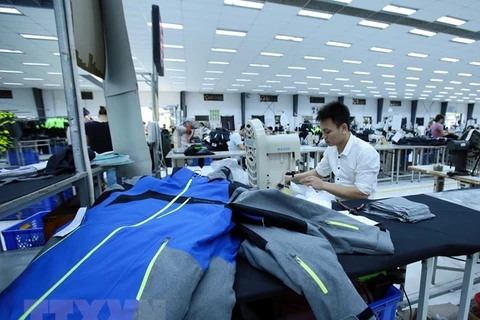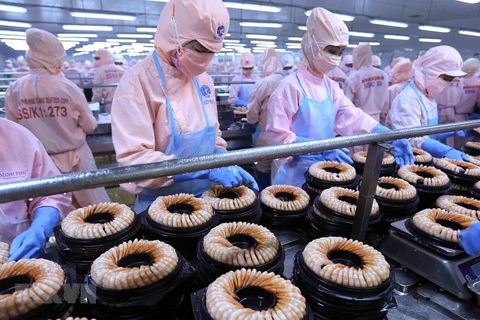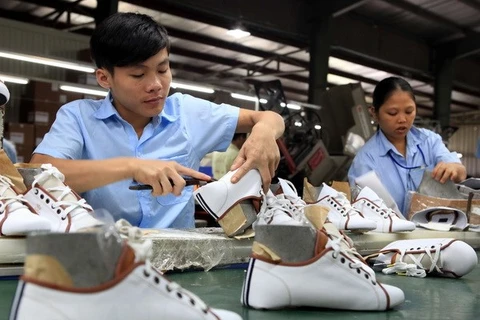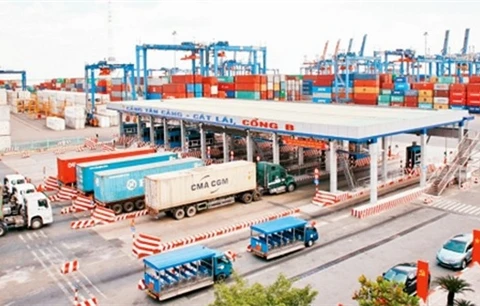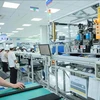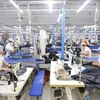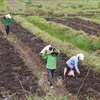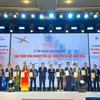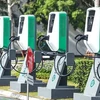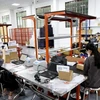Hanoi (VNS/VNA) - Free trade agreements (FTAs) have created opportunities for food imports and foreign investment in the domestic food industry, according to experts.
Countries with developed food processing industries such as Japan, the US and Australia and the EU have already promoted exports of their food products to Vietnam.
Last week in Ho Chi Minh City, 18 Canadian food companies met with potential partners.
Keith Colwell, Nova Scotia’s Minister of Agriculture and Minister of Fisheries and Aquaculture, expressed his hope that the trip could provide opportunities for Canadian food companies to export their products to Vietnam thanks to tariff reductions under the Comprehensive and Progressive Agreement for Trans-Pacific Partnership (CPTPP).
The minister told Thoi bao Kinh doanh (Business Times) newspaper that Canadian food businesses had shifted their focus to Vietnam after developments in the Chinese market.
These companies want to bring high-end Canadian products like seafood, agricultural products and beverages to new markets like Vietnam, Colwell said. Tariff reductions under the CPTPP had helped Canadian products become more competitive in Vietnam’s market.
Last year, Canada's agricultural and seafood exports to Vietnam reached a turnover of 312.7 million CAD (about 235 million USD).
In the first nine months of this year, Vietnam imported more than 14,824 tonnes of pork with a total value of 29.2 million USD, much higher than the imports of 14,295 tonnes in volume and 23.6 million USD in value last year.
According to Le Hong Minh, director of Vietrade’s Investment Promotion Centre for Industry and Trade, total FDI poured into Vietnam’s food processing sector was estimated at 11.2 billion USD with 717 projects, excluding foreign investors buying shares or conducting merger and acquisitions.
Foreign capital flows in the food industry were mainly from Asian countries such as Thailand, Malaysia, the Republic of Korea and China. These factories produced food for the domestic market and export.
Most of FDI projects in the food processing sector were concentrated in big cities and provinces like Hanoi, HCM City, Binh Duong, Dong Nai and Long An.
However, these FDI projects had little or no investment in developing raw materials, Minh said. Therefore, the industries supporting the food processing industry like cultivation and husbandry had not been developed according to modern standards.
He said domestic raw materials did not meet the production requirements of FDI enterprises in the food processing sector. For example, the domestic dairy industry could only meet the 25 percent of the domestic market demand, while the nation had to import 90 percent of its cooking oil.
According to experts, the State should encourage foreign invested projects in the food industry to transfer technology from developed countries in the fields of processing, packaging and preserving agricultural and aquatic products./.
Countries with developed food processing industries such as Japan, the US and Australia and the EU have already promoted exports of their food products to Vietnam.
Last week in Ho Chi Minh City, 18 Canadian food companies met with potential partners.
Keith Colwell, Nova Scotia’s Minister of Agriculture and Minister of Fisheries and Aquaculture, expressed his hope that the trip could provide opportunities for Canadian food companies to export their products to Vietnam thanks to tariff reductions under the Comprehensive and Progressive Agreement for Trans-Pacific Partnership (CPTPP).
The minister told Thoi bao Kinh doanh (Business Times) newspaper that Canadian food businesses had shifted their focus to Vietnam after developments in the Chinese market.
These companies want to bring high-end Canadian products like seafood, agricultural products and beverages to new markets like Vietnam, Colwell said. Tariff reductions under the CPTPP had helped Canadian products become more competitive in Vietnam’s market.
Last year, Canada's agricultural and seafood exports to Vietnam reached a turnover of 312.7 million CAD (about 235 million USD).
In the first nine months of this year, Vietnam imported more than 14,824 tonnes of pork with a total value of 29.2 million USD, much higher than the imports of 14,295 tonnes in volume and 23.6 million USD in value last year.
According to Le Hong Minh, director of Vietrade’s Investment Promotion Centre for Industry and Trade, total FDI poured into Vietnam’s food processing sector was estimated at 11.2 billion USD with 717 projects, excluding foreign investors buying shares or conducting merger and acquisitions.
Foreign capital flows in the food industry were mainly from Asian countries such as Thailand, Malaysia, the Republic of Korea and China. These factories produced food for the domestic market and export.
Most of FDI projects in the food processing sector were concentrated in big cities and provinces like Hanoi, HCM City, Binh Duong, Dong Nai and Long An.
However, these FDI projects had little or no investment in developing raw materials, Minh said. Therefore, the industries supporting the food processing industry like cultivation and husbandry had not been developed according to modern standards.
He said domestic raw materials did not meet the production requirements of FDI enterprises in the food processing sector. For example, the domestic dairy industry could only meet the 25 percent of the domestic market demand, while the nation had to import 90 percent of its cooking oil.
According to experts, the State should encourage foreign invested projects in the food industry to transfer technology from developed countries in the fields of processing, packaging and preserving agricultural and aquatic products./.
VNA

